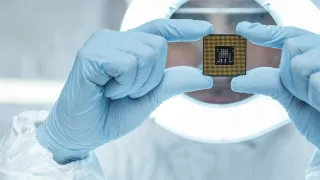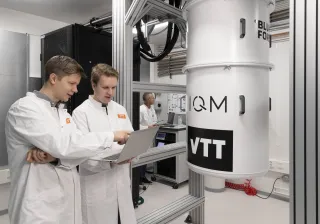Tailored cryogenic microsystems are needed for interfacing and also in local cooling of future quantum computers’ millions of qubits. European ARCTIC project has taken up the task to establish a comprehensive European supply chain for cryogenic photonics, microelectronics and, in general, cryo-microsystems around the emerging quantum computing industry.
VTT’s main roles in the project are to develop photodetectors, analog and digital cryo-electronics and thermal management tools.
"Cryogenics has gained prominence in ICT owing to advances in quantum technologies, yet the extensive application of cryo-enabled systems still demands considerable R&D. In this area, the development of interfaces between complex cryo-sensor systems and quantum processors is crucial," states Mika Prunnila, Professor at VTT.
The first European Chips Joint undertaking project ARCTIC (Advanced Research on Cryogenic Technologies for Innovative Computing) has started to establish a complete European supply chain for cryogenic photonics, microelectronics, and, in general, cryo-microsystems around the emerging quantum computing industry and different cryo-enabled ICT applications.
The project aims to develop cutting-edge technologies that can address the demands of various fields, such as computational chemistry, biosciences and cyber security, that rely on cryogenic microsystems and quantum computing.
The research consortium, coordinated by Imec, brings together 36 partners from 11 countries from industry, academia and leading RTOs. The project covers a wide range of activities, such as developing materials and fabrication processes, novel simulation approaches, heterogenous packaging, and optimizing devices and circuits for cryogenic operation.
“The performance requirements required from electronic devices and circuits at cryogenic temperatures are quite different compared to those at room temperature. Especially when interfacing very sensitive systems such as quantum processors, all aspects of microelectronic technologies need to be optimized”, says Alexander Grill, scientific leader of ARCTIC at Imec.
ARCTIC is a collaborative effort that involves technology developers, technology integrators, modelers, designers, system and application players and end users to ensure a seamless interfacing between different layers. The project will address the existing gaps in the cryo-modelling and standardization domains, among others. Moreover, the project will benefit from Europe’s unique R&D ecosystem and its RTOs.
ARCTIC project began earlier this year and will continue until 2027. The total budget for this partly EU-funded project is above EUR 40 million. There are also national financiers in the project. Business Finland is the joint national financier for the Finnish sub-consortium of ARCTIC. In addition to VTT, which leads the Finnish sub-consortium, the Finnish pack includes Bluefors, IQM, Okmetic, Picosun, Quantrolox, SemiQon and University of Tampere.
You can find more information on LinkedIn, and on the project website www.arctic-kdt.eu.



